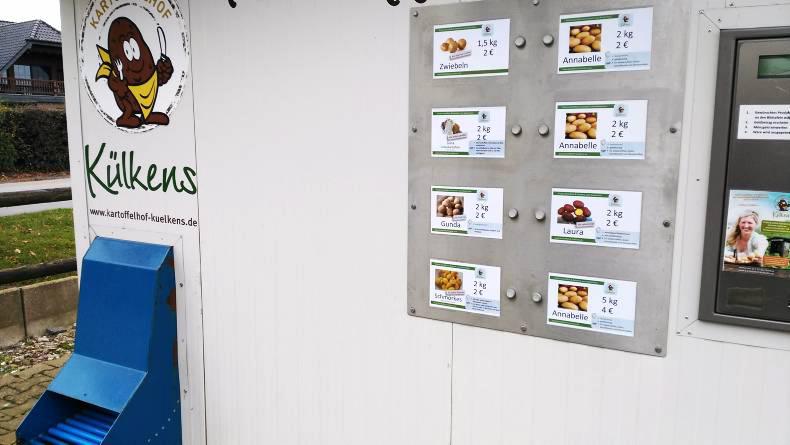On a trip organised by Macra and Ornua, a group of young Irish farmers got the chance to visit the 120ha potato farm near Dusseldorf.
“They really knew what they were producing, who their consumer was,” said Sean Coughlan, member of Adergoole Macra and 2014 Nuffield Scholar. “They were not just producing a commodity, loading it onto a truck and sending it away. They were really in touch with their end market and trying to maximise the income they could bring into the farm, which is very important and will be much more important for us going forward.”
A lot of in-house work is done on the farm. One of the staff is a qualified agri-engineer who designed the farm’s system to sort, wash and bag the produce.
“How they were targeting their markets and diversifying their produce so they weren’t just relying on one big purchaser was very interesting,” said Coughlan. “They were adding value and had done their research on what the actual end customer wants.
“You could see there was a lot of in-house stuff done between the farmer and the staff. I suppose some of the work is quite seasonal so in order to keep staff for the whole year they were doing a lot of down season work themselves and designing their own ways to add value to the product.”
Listen to the young Irish farmers discussing their visit in our podcast below:
The farm was based on good quality land that yielded in the region of 80t/ha. But a lot of the ground was rented.
“They had very little owned land apart from the yard itself and the sheds,” said Kieran McDermott, Newbliss Macra, Co Monaghan. “It was €1,200/ha/year to rent the land and cost €80,000/m2.”
Read more
A German dairy farm has €1.8m turnover but just 75 cows
On a trip organised by Macra and Ornua, a group of young Irish farmers got the chance to visit the 120ha potato farm near Dusseldorf.
“They really knew what they were producing, who their consumer was,” said Sean Coughlan, member of Adergoole Macra and 2014 Nuffield Scholar. “They were not just producing a commodity, loading it onto a truck and sending it away. They were really in touch with their end market and trying to maximise the income they could bring into the farm, which is very important and will be much more important for us going forward.”
A lot of in-house work is done on the farm. One of the staff is a qualified agri-engineer who designed the farm’s system to sort, wash and bag the produce.
“How they were targeting their markets and diversifying their produce so they weren’t just relying on one big purchaser was very interesting,” said Coughlan. “They were adding value and had done their research on what the actual end customer wants.
“You could see there was a lot of in-house stuff done between the farmer and the staff. I suppose some of the work is quite seasonal so in order to keep staff for the whole year they were doing a lot of down season work themselves and designing their own ways to add value to the product.”
Listen to the young Irish farmers discussing their visit in our podcast below:
The farm was based on good quality land that yielded in the region of 80t/ha. But a lot of the ground was rented.
“They had very little owned land apart from the yard itself and the sheds,” said Kieran McDermott, Newbliss Macra, Co Monaghan. “It was €1,200/ha/year to rent the land and cost €80,000/m2.”
Read more
A German dairy farm has €1.8m turnover but just 75 cows






 This is a subscriber-only article
This is a subscriber-only article



















SHARING OPTIONS: